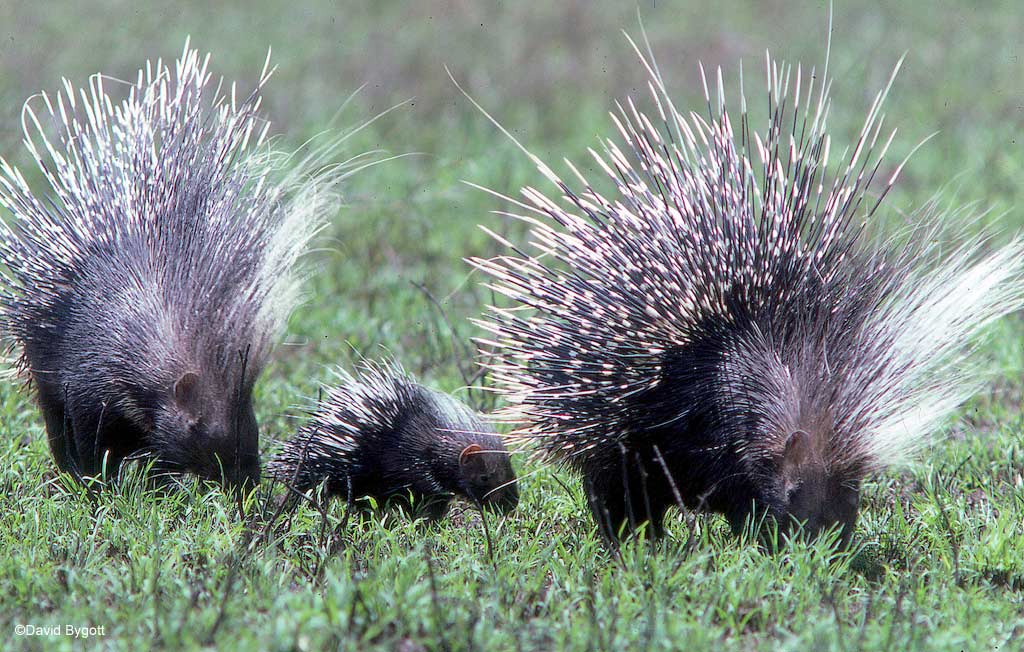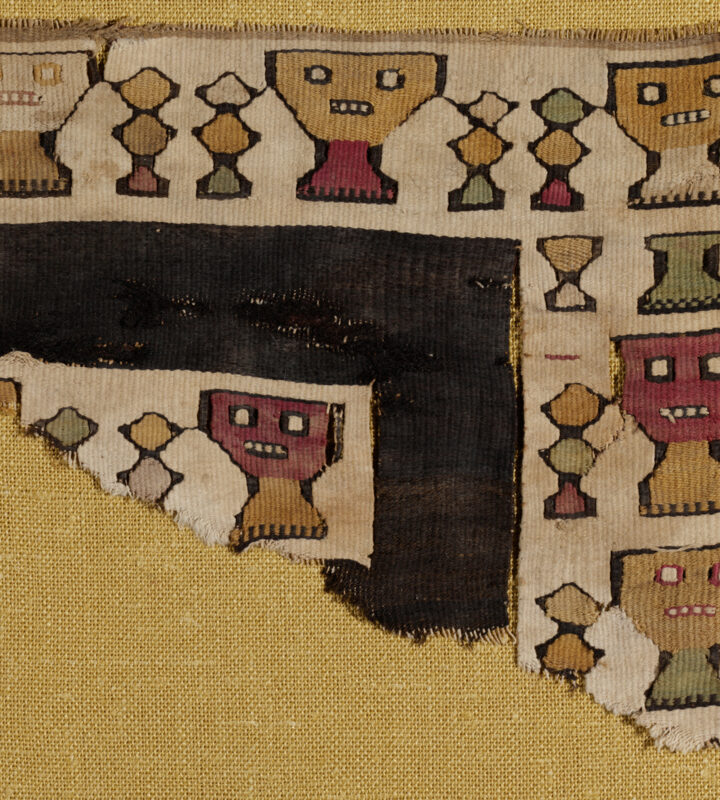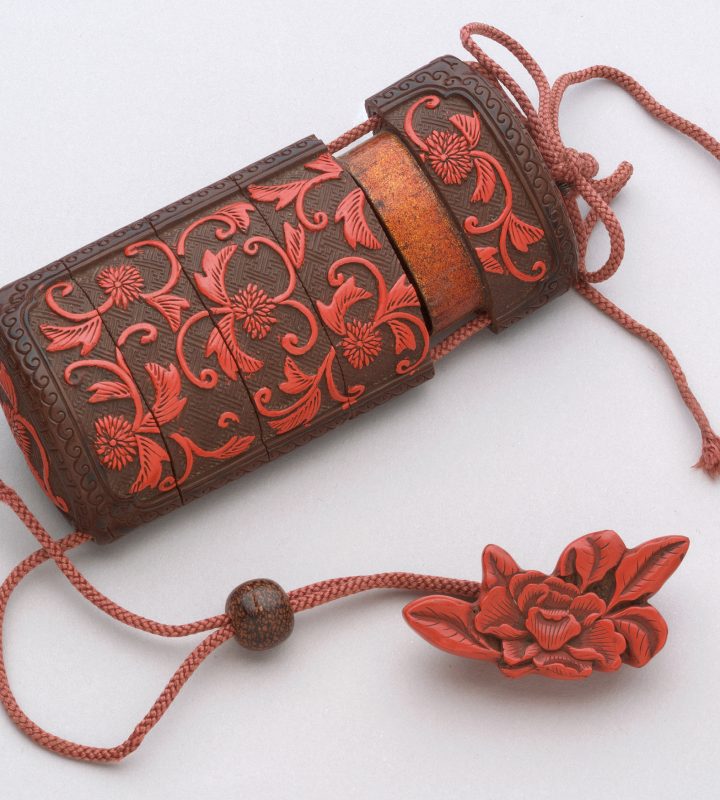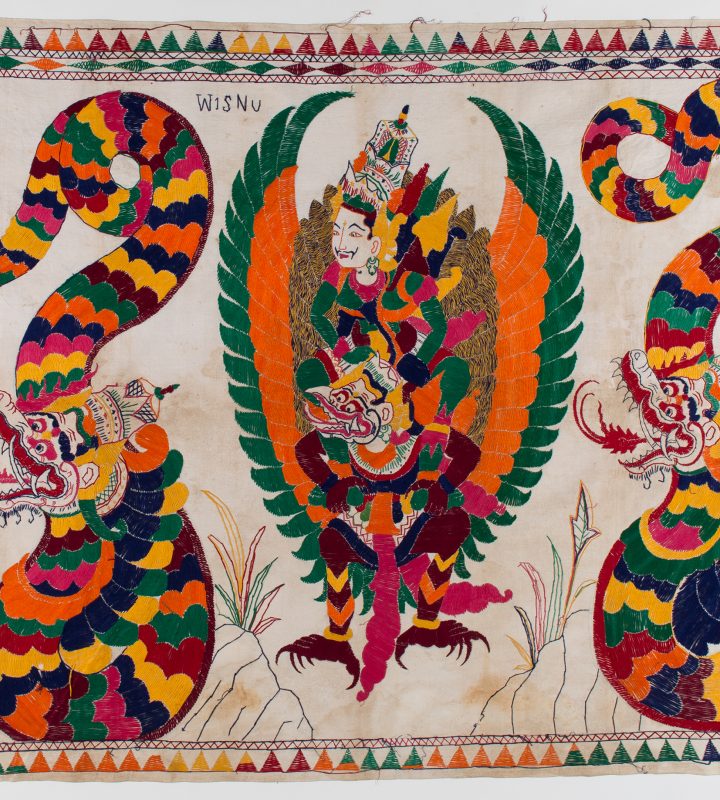How can artists transform materials?
How can artists
transform materials?
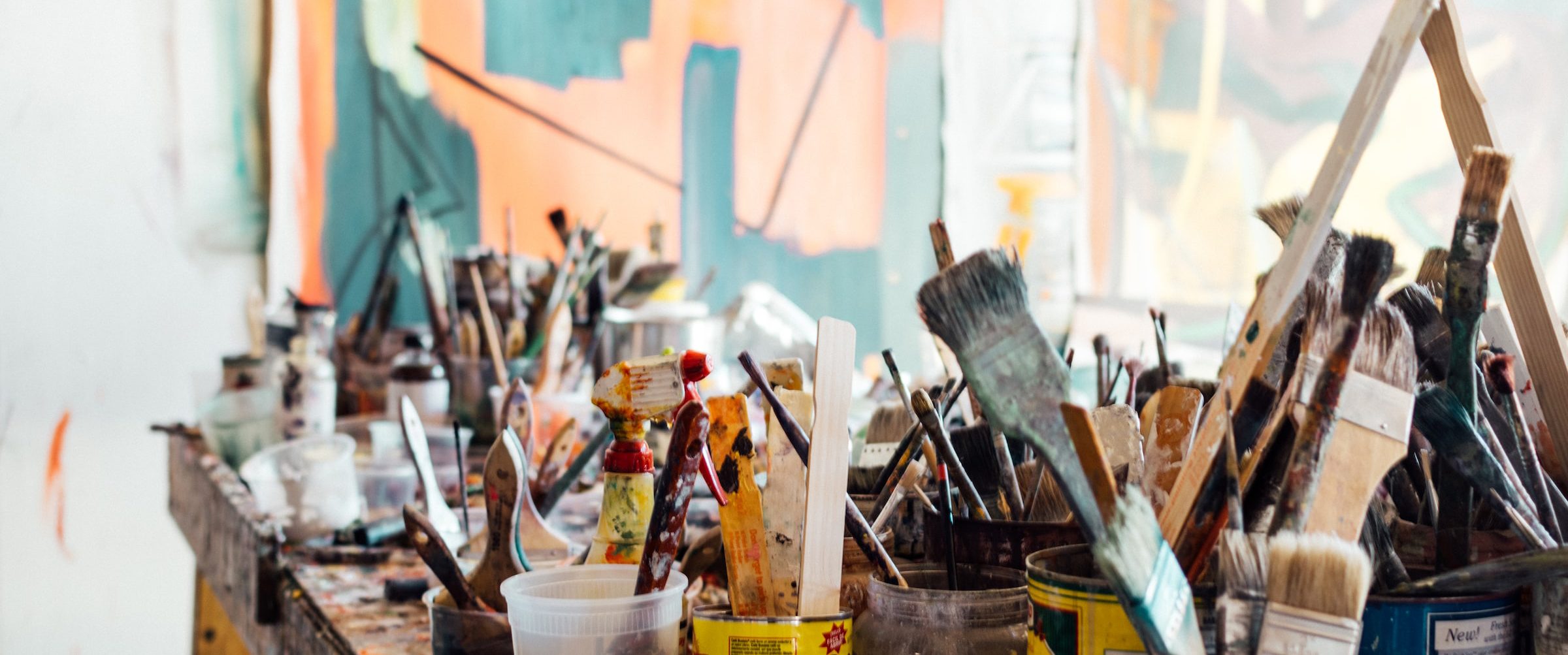
What is a material?
Anything created by a person is made out of materials, sometimes one material, and sometimes many! Materials are like ingredients—you can combine them to create something new. Works of art can be made out of materials you might have used in art class, like watercolor paint, clay, or plaster. Another word for a material someone uses to make a work of art is a medium. If you make something with acrylic paint, then acrylic paint is one medium or material you used.
What materials have you made art out of? Did you ever make an art project out of a material you usually use for a different purpose?
All over the world and across time, artists have also used materials you might not be familiar with. Many works of art from the Johnson Museum are made of materials with fascinating stories.
Materials can hold a secret
This object is from South America, and is called a tumbaga medallion. In the center, you can see the face of a jaguar—including eyes, nose, mouth, and fangs. The medallion is fairly small—about the size of two slices of bread. Its brilliant, shiny appearance can help us infer that it is made out of metal. Imagine picking up this shining object. Holding this item in your hand, you would be surprised by how little it weighs. That’s because is made out of a single piece of metal that has been hammered into a very thin sheet.
This tumbaga medallion was most likely created to be buried with someone after they had died. Only certain people, who were important or celebrated, would be buried with medallions like this. The thin sheet of metal would have been placed on their chest or another part of their body, as a way to honor them. The gleaming gold surface of this delicate ornament helps us infer that these objects were used for special, ceremonial purposes, not everyday life.
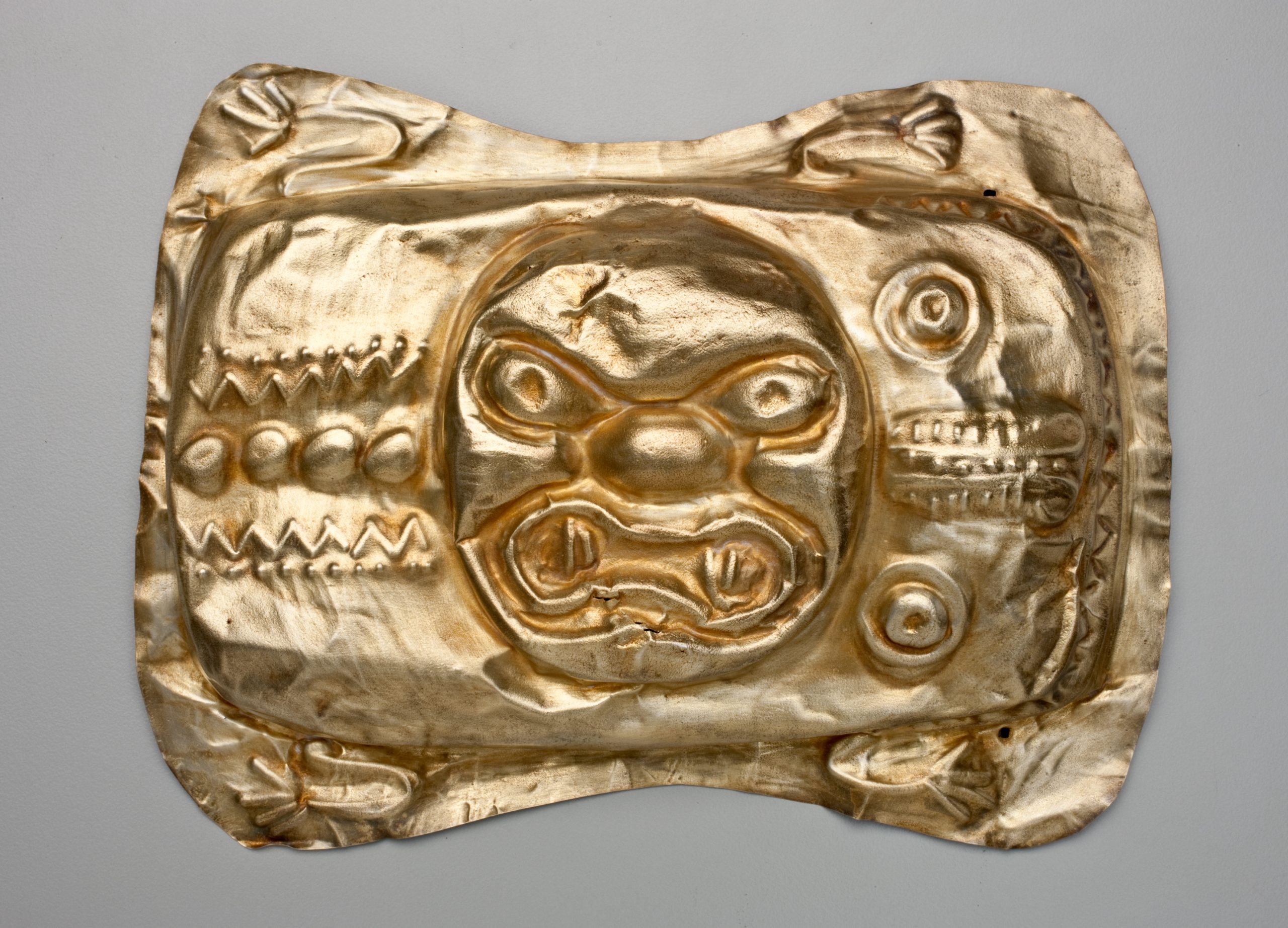
But the materials contain a surprising secret! Even though it looks just like precious pure gold, this metal is actually a mixture! The artists who created this, and other medallions like it, were able to make a mixture of metals look just like pure gold. This mixture of metals is called tumbaga, and is created through a brilliant process developed in Peru more than 2,400 years ago.

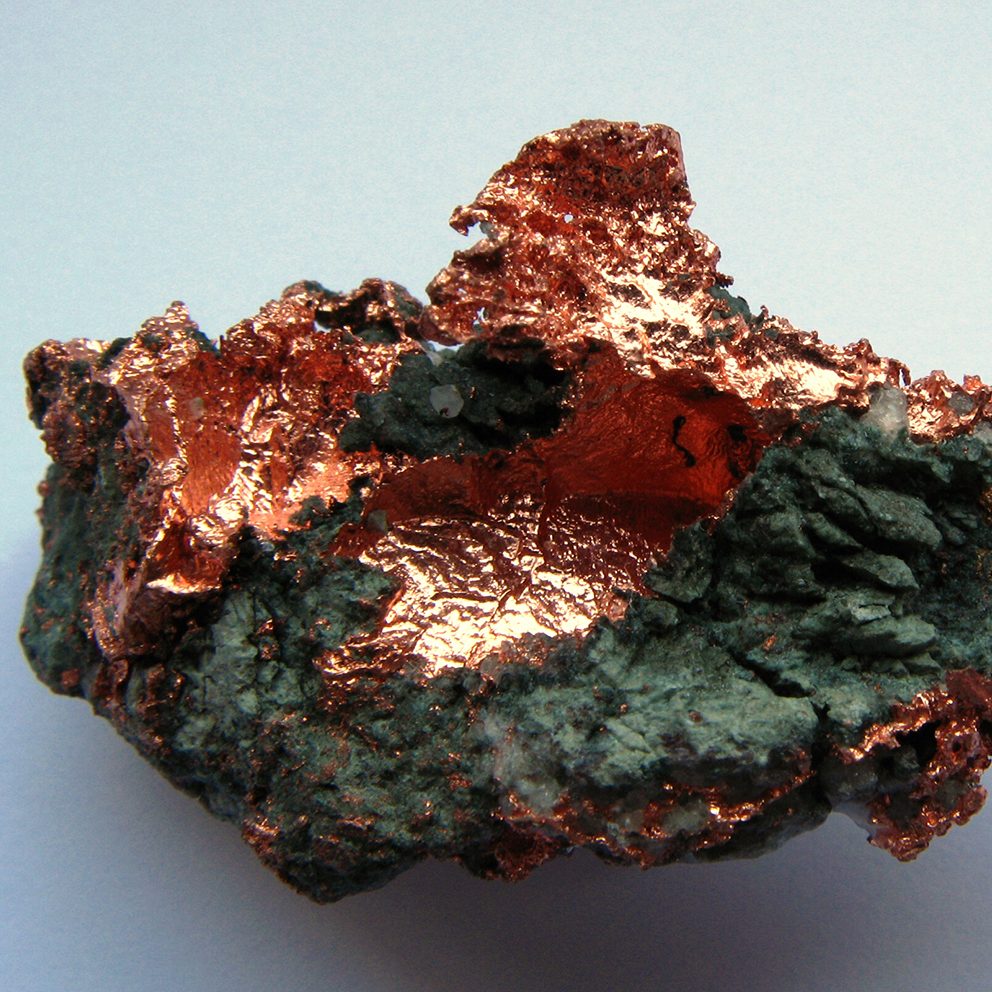
First, a mixture of metals was heated up in order to combine the metals together. A large amount of copper was mixed with a small amount of gold, and sometimes a tiny bit of silver. This mixture of metals is called an alloy.
Then, the gold-copper alloy was pounded into a thin sheet. This sheet looked just like copper, but through a careful process you’re about to learn, it could be transformed to look just like gold.
To do this, artists figured out how to use a mixture of plant leaves full of special juices, which were acidic, or sour like lemon juice and vinegar. The acid from the leaves would cause a very, very, very thin layer of gold particles to come to the surface of the metal.
As a final step, artists would use a mixture of very fine sand to press the gold particles into a solid, thin, layer of gold. This thin layer covered the whole sheet of metal, and made it look like the artwork was solid gold! If anyone ever tried to melt or crush something made out of tumbaga, to use the gold for something else, they would be surprised to find out that it wasn’t actually made of pure gold at all!
Check out these tumbaga medallions from the Johnson Museum’s collection, all made using the same process.
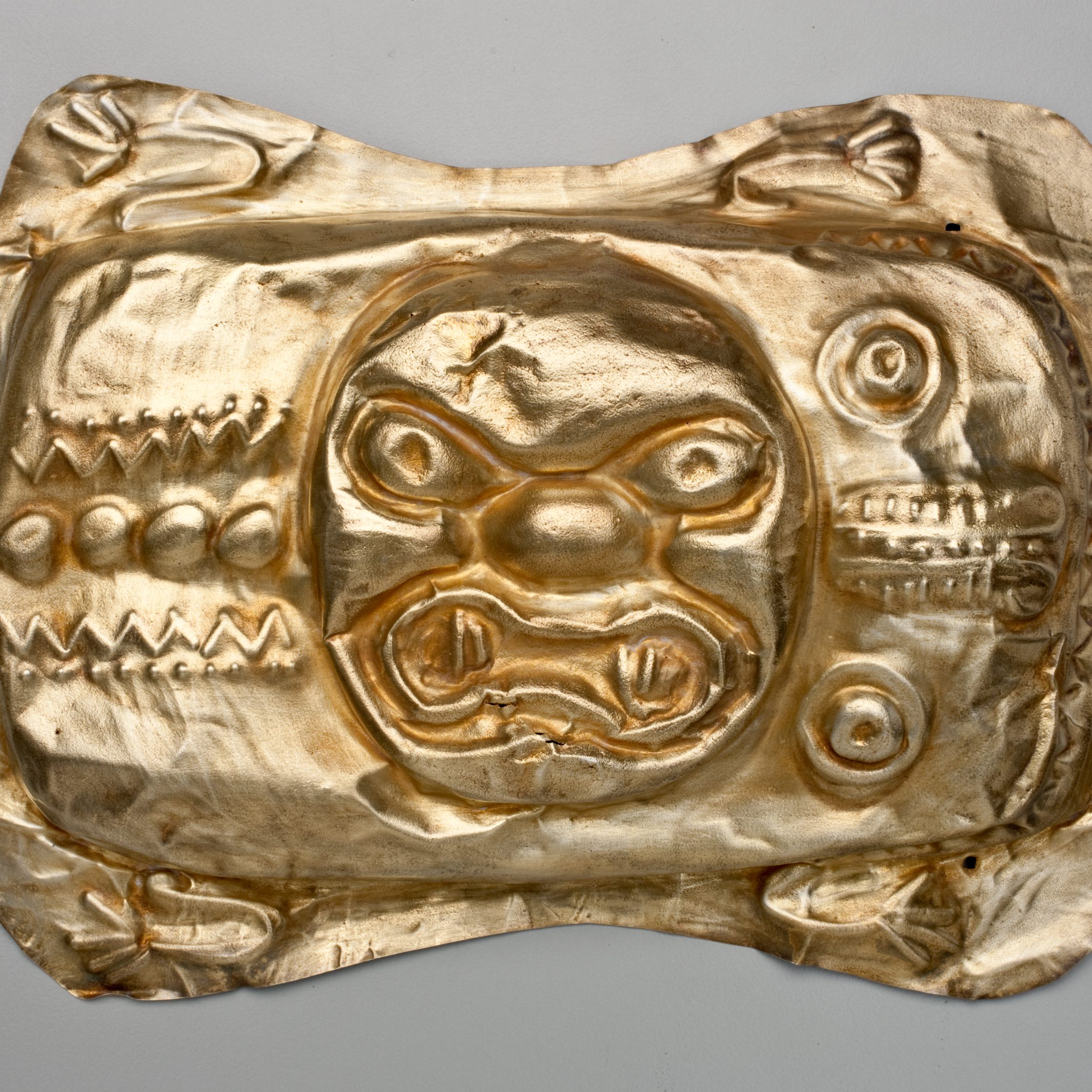
Gift of Thomas Carroll, PhD 1951, 2006.070.377
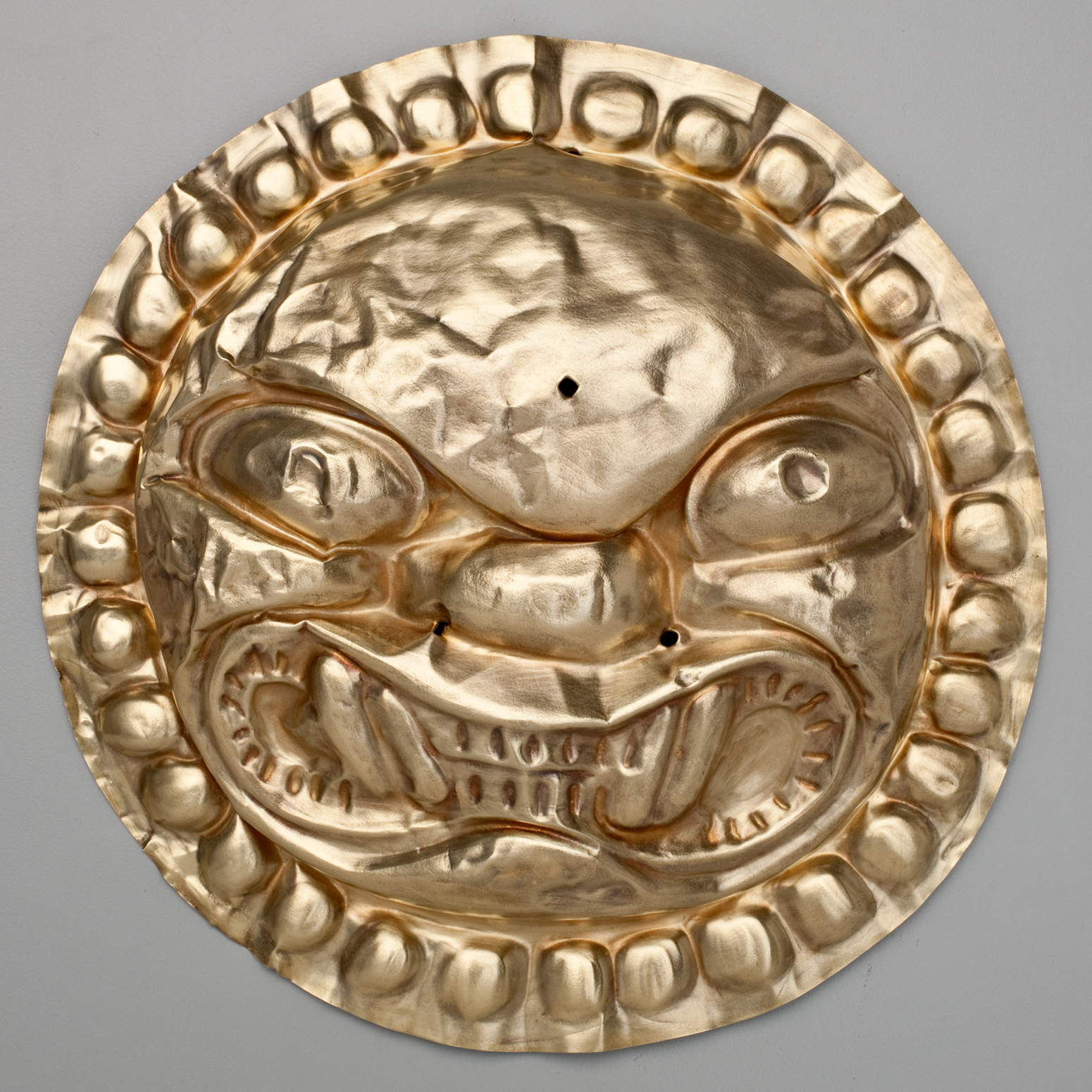
Gift of Thomas Carroll, PhD 1951, 2006.070.369

Gift of Thomas Carroll, PhD 1951, 2008.070.032
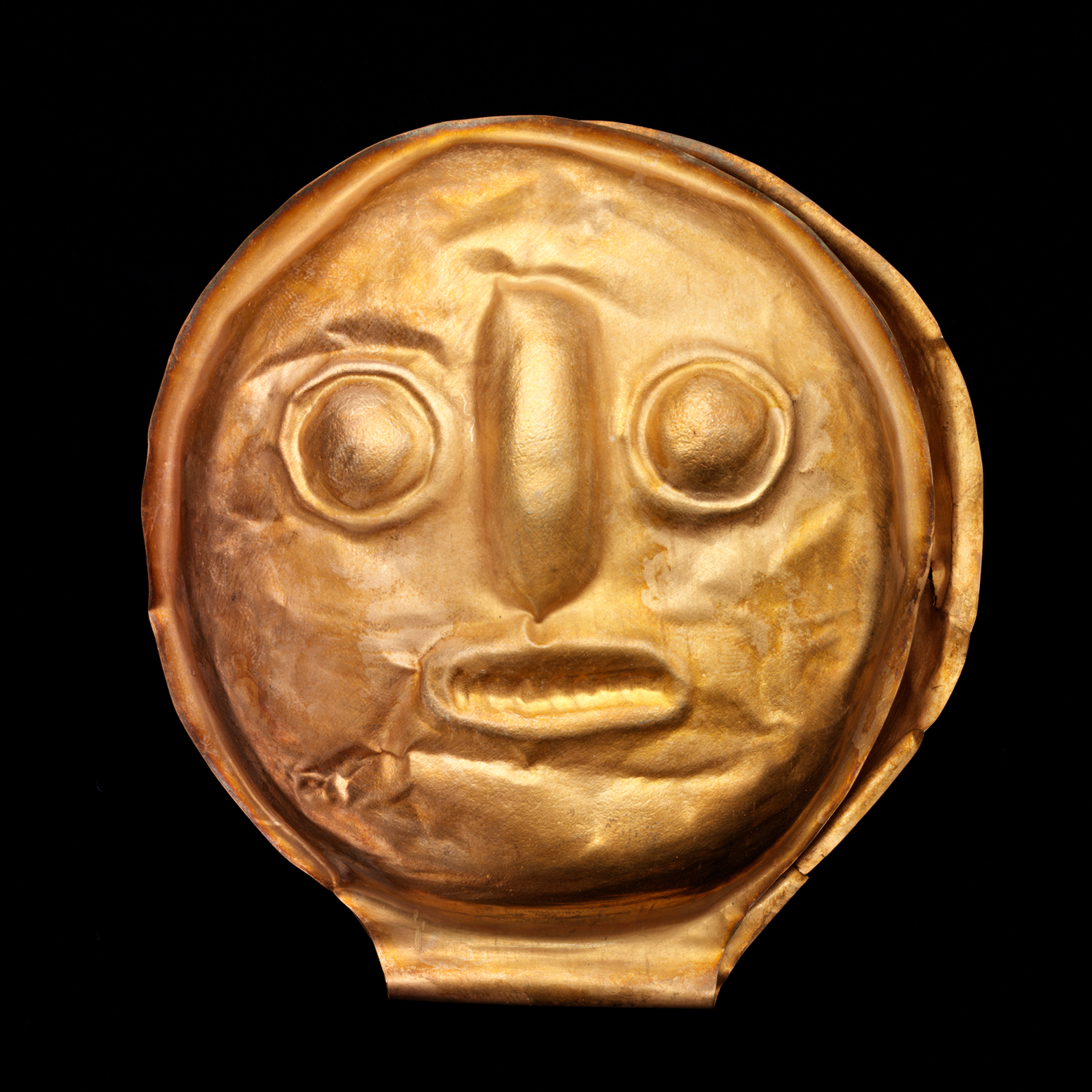
Gift of Thomas Carroll, PhD 1951, 2008.070.030
Materials can be a source of power
This large headdress was made by members of the Bamana culture in Mali, a country in West Africa. Its sturdy wooden base would have been use to rest on top of a person’s head. But not just any person! This mask would have been worn by a member of a secret society called the Komo society, a very selective group of powerful men. The mask itself is designed to give its wearers and creators power, through the materials it is made out of. Let’s find out more about these materials to figure out how!
After a wooden base of was carved by a sculptor, members of the Komo society would carefully, add a variety to the wooden foundation. Can you recognize any of the materials on this mask?
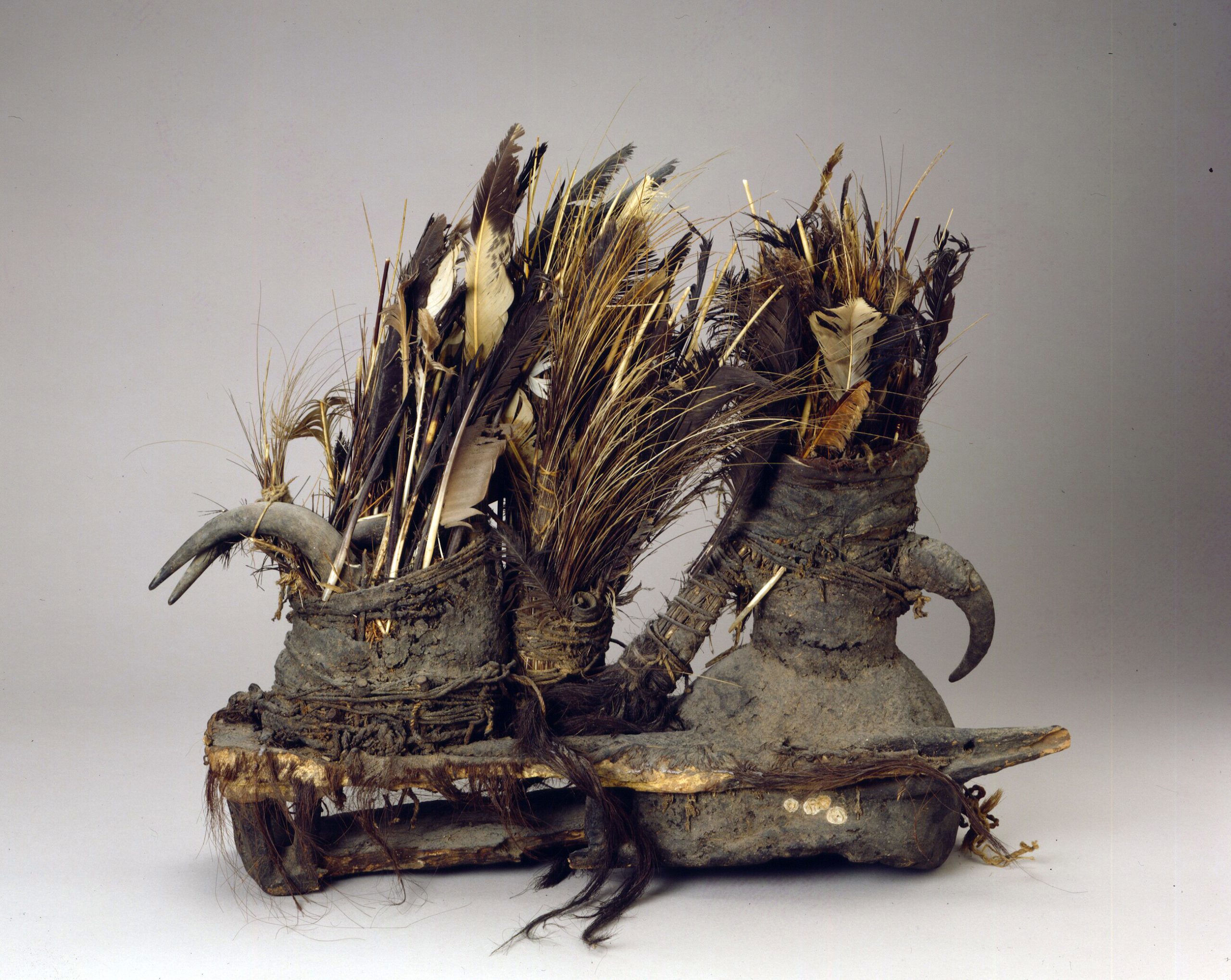
This mask includes porcupine quills (like you can see in the picture), bird skulls, horns, feathers, and more. Why do you think the artist decided to use materials from these particular animals? The mask also includes substances we haven’t identified. What substances would you add, and why?
Each of the materials added to this mask would have helped harness different kinds of spiritual energy. The unique and powerful abilities of each animal would become part of the mask through the materials. What powers do think each animal included here would have supplied?
Now that you know the hidden stories of the materials in these two works of art, you can discover other artworks in the Johnson Museum’s collection. So many objects are made of materials with complex stories. Some of those stories have yet to be discovered!
—Elizabeth S. Yearsley, Post-Baccalaureate Fellow in Pre-K–12 Museum Education (2022)
